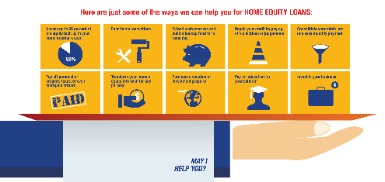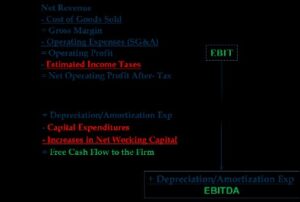

Moreover, AI in investment management is different and more complex than AI applied to non-investment disciplines, and the tools are rapidly evolving. Artificial Intelligence and quantitative investment techniques are disrupting investment management in unprecedented ways. In the hedge fund industry, 8 of the top 10 largest managers are now quantitatively focused. More and more fundamental managers are announcing their adoption of quantitative and AI techniques. Sameena Shah is a Managing Director, Artificial Intelligence Research in Digital & Platform Services, where she and the team work across the firm to create Artificial Intelligence technologies for business transformation and growth. She is a highly accomplished leader with over 20 years of educational and industry experience in AI, engineering, data.
With a Copilot, each Wealth Manager becomes many times more efficient and accurate in their work, multiplying their value to a financial services firm. The first two decades of the twenty-first century have experienced an unprecedented way of technological progress, which has been driven by advances in the development of cutting-edge digital technologies and applications in Artificial Intelligence (AI). Artificial intelligence is a field of computer science that creates intelligent machines capable of performing cognitive tasks, such as reasoning, learning, taking action and speech recognition, which have been traditionally regarded as human tasks (Frankenfield 2021). AI comprises a broad and rapidly growing number of technologies and fields, and is often regarded as a general-purpose technology, namely a technology that becomes pervasive, improves over time and generates complementary innovation (Bresnahan and Trajtenberg 1995). As a result, it is not surprising that there is no consensus on the way AI is defined (Van Roy et al. 2020). Because of the complexities involved in risk modeling, this is an area where AI can have a substantial impact.
For example, financial institutions want to be able to weed out implicit bias and uncertainty in applying the power of AI to fight money laundering and other financial crimes. Although algorithms and AI advisors are gaining ground, human traders still dominate the cryptocurrency market (Petukhina et al. 2021). For this reason, substantial arbitrage opportunities are available in the Bitcoin market, especially for USD–CNY and EUR–CNY currency pairs (Pichl and Kaizoji 2017). Likewise, the feed-forward neural network effectively approximates the daily logarithmic returns of BTCUSD and the shape of their distribution (Pichl and Kaizoji 2017).

Further, automated portfolios are also set to automatically rebalance if the target allocations in the portfolio drift too far from the selected portfolio. The idea is to develop AI algorithms that allow a prediction about where a stock or other security will go for the purpose of making a profit. While many develop algorithms using AI to make trading or investment decisions, not all models are correct. Active money managers are trying to outperform the general market indexes, and some do, while others do not. If you believe that cycles repeat, for example, you might utilize AI tools to identify these cycles.
AI technologies interpret vast amounts of data, learn from them, and then make autonomous decisions or assist in decision-making processes. In finance, this often translates into applications like algorithmic trading, fraud detection, customer service enhancement, and risk management. Ayasdi creates cloud-based machine intelligence solutions for fintech businesses and organizations to understand and manage risk, anticipate the needs of customers and even aid in anti-money laundering processes. Its Sensa AML and fraud detection software runs continuous integration and deployment and analyzes its own as well as third-party data to identify and weed out false positives and detect new fraud activity.
Adobe (ADBE -1.74%) is the leading provider of professional-level design and document management software. It also has a growing suite of tools for digital marketers that includes tools like Photoshop or its Acrobat PDF reader. For those making their own investment decisions, stocks screeners would likely be helpful AI tools when choosing the individual stocks for your portfolio.
The need to ramp up cybersecurity and fraud detection efforts is now a necessity for any bank or financial institution, and AI plays a key role in improving the security of online finance. The platform lets https://www.wave-accounting.net/ investors buy, sell and operate single-family homes through its SaaS and expert services. Additionally, Entera can discover market trends, match properties with an investor’s home and complete transactions.
For example, it has implemented a proprietary algorithm to detect fraud patterns—each time a credit card transaction is processed, details of the transaction are sent to central computers in Chase’s data centers, which then decide whether or not the transaction is fraudulent. Chase’s high scores in both Security and Reliability—largely bolstered by its use of AI—earned it second place in Insider Intelligence’s 2020 US Banking Digital Trust survey. High volume, mundane processes, such as invoice entry, can lead to fatigue, burnout, and error in humans. The end result is better data to work with and more time for the finance team to focus on putting that data to use. “A detailed account of the literature on AI in Finance”, the literature on Artificial Intelligence in Finance is vast and rapidly growing as technological progress advances. There are, however, some aspects of this subject that are unexplored yet or that require further investigation.

The United States, in particular, are considered the “early adopters” of AI and are likely to benefit the most from this source of competitive advantage. More lately, emerging countries in Southeast Asia and the Middle East have received growing interest. Finally, a smaller number of papers address underdeveloped regions in Africa and various economies in South America. AI may be adopted faster by digitally native, cloud-based firms, such as FinTechs and BigTechs, with agile incumbent banks following fast. Many incumbents, weighed down by tech and culture debt, could lag in AI adoption, losing market share. Shapeshift is a decentralized digital crypto wallet and marketplace that supports more than 750 cryptocurrencies.
Exposure modeling estimates the potential losses or impacts a financial institution, or portfolio may experience under different market conditions. It aims to quantify a portfolio’s potential vulnerabilities and sensitivities to various risk factors. Exposure modeling involves analyzing the relationship between the portfolio’s holdings and different market variables to assess how changes in those variables can affect the portfolio’s value or performance.
According to Fernandes and co-authors, the VIX is negatively related to the SandP500 index return and positively related to its volume. The heterogeneous autoregressive (HAR) model yields the best predictive results as opposed to classical neural networks (Fernandes et al. 2014; Vortelinos 2017). Modern neural networks, such as LSTM and NARX (nonlinear autoregressive exogenous network), also qualify as valid alternatives (Bucci 2020). Another promising class of neural networks is the higher-order neural network (HONN) https://www.quick-bookkeeping.net/unadjusted-trial-balance-example-purpose/ used to forecast the 21-day-ahead realised volatility of FTSE100 futures. Thanks to its ability to capture higher-order correlations within the dataset, HONN shows remarkable performance in terms of statistical accuracy and trading efficiency over multi-layer perceptron (MLP) and the recurrent neural network (RNN) (Sermpinis et al. 2013). To conduct a sound review of the literature on the selected topic, we resort to two well-known and extensively used approaches, namely bibliometric analysis and content analysis.
Eno launched in 2017 and was the first natural language SMS text-based assistant offered by a US bank. Eno generates insights and anticipates customer needs throughover 12 proactive capabilities, such as alerting customers about suspected what are the implications of using lifo and fifo inventory methods fraud or price hikes in subscription services. Deep networks, in particular, efficiently predict the direction of change in forex rates thanks to their ability to “learn” abstract features (i.e. moving averages) through hidden layers.